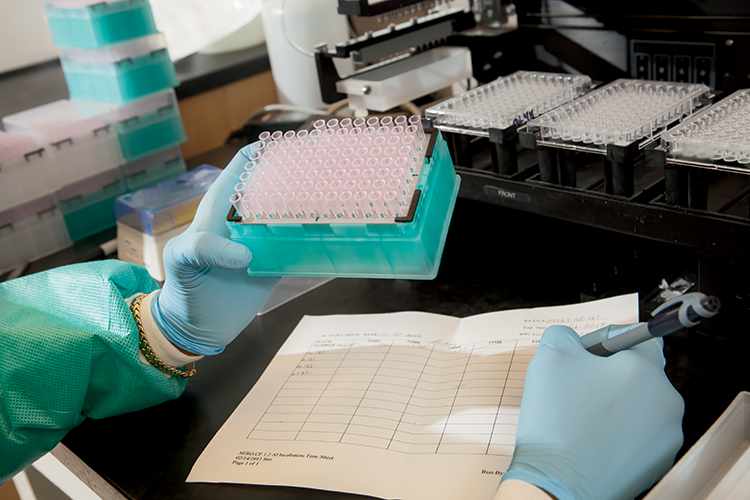Home > Alabama > Alabama Farm to Table > Keeping Alabama Agriculture and Consumers Healthy
Keeping Alabama Agriculture and Consumers Healthy
 When it comes to biosecurity in Alabama, it’s no wonder those who are responsible for protecting public health have a clear focus on avian influenza. Poultry, after all, is a leading agricultural commodity in Alabama.
When it comes to biosecurity in Alabama, it’s no wonder those who are responsible for protecting public health have a clear focus on avian influenza. Poultry, after all, is a leading agricultural commodity in Alabama.
Avian influenza, or bird flu, is found primarily in wild waterfowl, such as ducks, gulls and shorebirds, but can also spread to domestic poultry such as chickens and turkeys. In late 2014 and into 2015, the virus was spotted for the first time in the continental U.S., where strains were found in the Pacific Northwest and Midwest. This resulted in a “high alert” status for officials in the Animal Industries Division of the Alabama Department of Agriculture and Industries.
Under the direction of State Veterinarian Dr. Tony Frazier, a team of representatives from government, industry and backyard growers have continuously worked on preventative plans in case of an outbreak in Alabama.
“We want to emphasize this particular virus that was part of the outbreak in the Midwest has shown no evidence at all to be infectious to humans,” says Frazier, who initiated regular meetings on the issue in November 2014. “The poultry that we get to eat is absolutely 100 percent completely safe. Still, we just keep on the back burner the notion that this is a very active avian influenza virus, and we keep up with that.”
Top-Notch Labs
The Animal Industries Division is in charge of implementing and administering programs to help prevent, eradicate, and control diseases of livestock and poultry throughout Alabama. In addition, it assures that all meat and meat food products offered for sale to consumers are not adulterated, are wholesome and are properly marked, labeled and packaged.
One of the ways the division carries out its responsibilities is through its diagnostic laboratory system, which provides diagnostic services for Alabama livestock and poultry producers, veterinarians, animal owners, and apiary owners. The main lab is next to Auburn University’s College of Veterinary Medicine, with regional labs in Boaz, Hanceville and Elba.
![Alabama biosecurity [INFOGRAPHIC]](https://eadn-wc01-4177395.nxedge.io/wp-content/uploads/2020/05/Screen-Shot-2016-03-02-at-9.38.09-AM.jpg)
Alabama’s lab is part of the National Animal Health Laboratory Network (NAHLN) and is accredited by the American Association of Veterinary Laboratory Diagnosticians (AAVLD), a network of U.S. labs considered the best for testing procedures.
“To be from such a small state, we’re really proud to be a part of AAVLD and the NAHLN,” says Dr. David Pugh, director of the state’s lab system. “That’s the star-studded, gold-plated, top notch of labs. You don’t get any higher than that. It’s a quality-assurance program that we use to validate all our tests – and outside groups evaluate us – to make sure our testing procedures are in really good shape and accurate.”
Strength in Testing
While most of the testing of late has been on poultry, the lab teams also stay busy with other potential threats in livestock, such as brucellosis, foot and mouth disease, hog cholera, and many more animal disease and toxicities.
Nevertheless, the outbreak that swept through the Midwest “has caused us all to elevate our antennas for avian influenza,” Frazier says. “It doesn’t make those other diseases less important, but because poultry is the No. 1 agriculture industry in Alabama, we’re on high alert.”
For the most part, the constant testing has made the poultry science department at Auburn even stronger.
“There are a lot of good things that come out of this,” Frazier says. “It advances the science, and it produces good product for the producer and, ultimately, for the consumer. We want to provide that economic and wholesome source of protein to consumers here in Alabama, the rest of the country, and for that matter, the rest of the world.”



